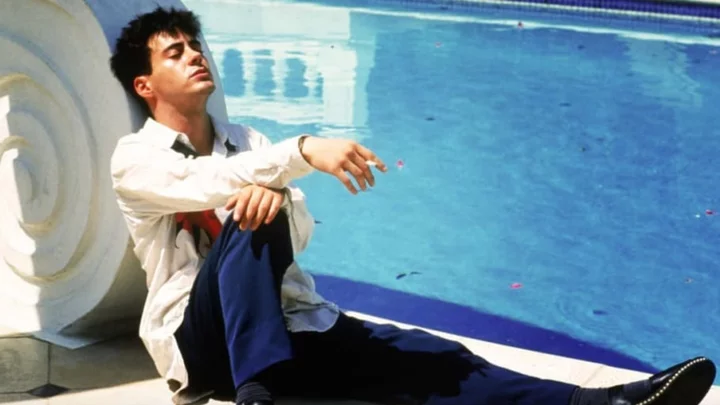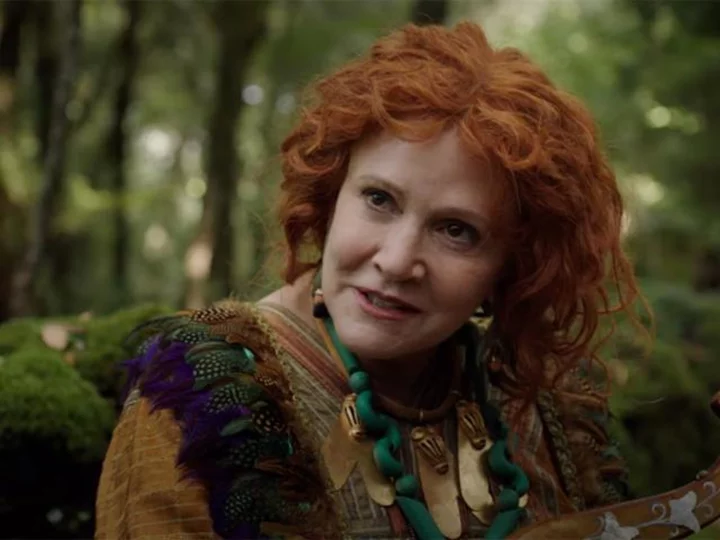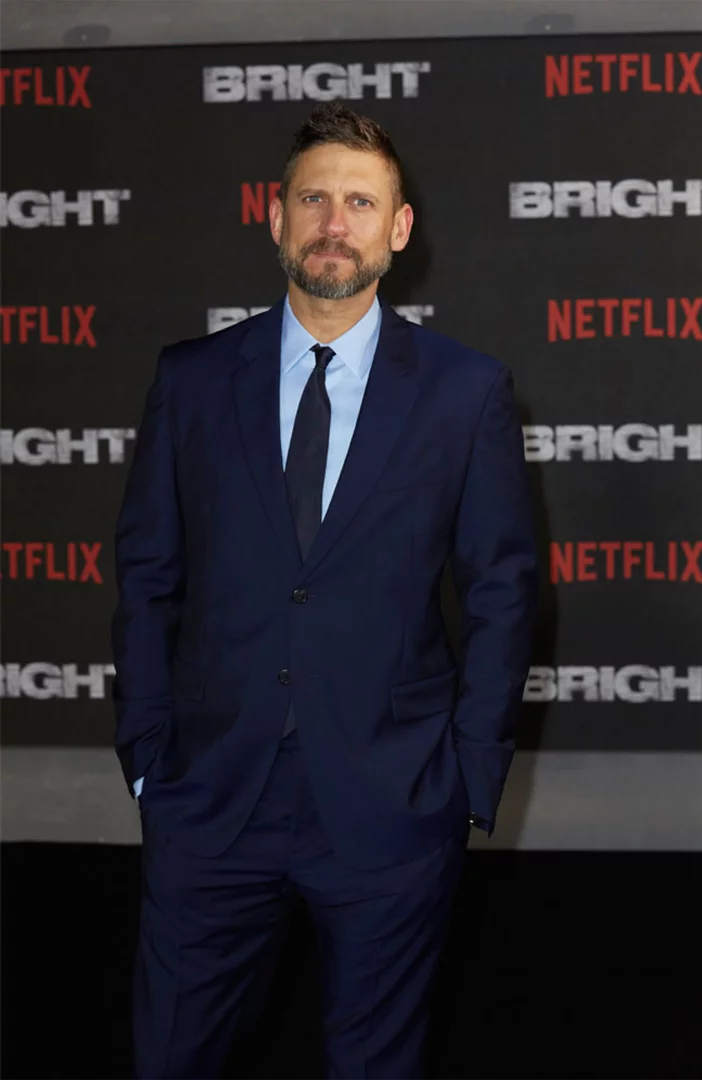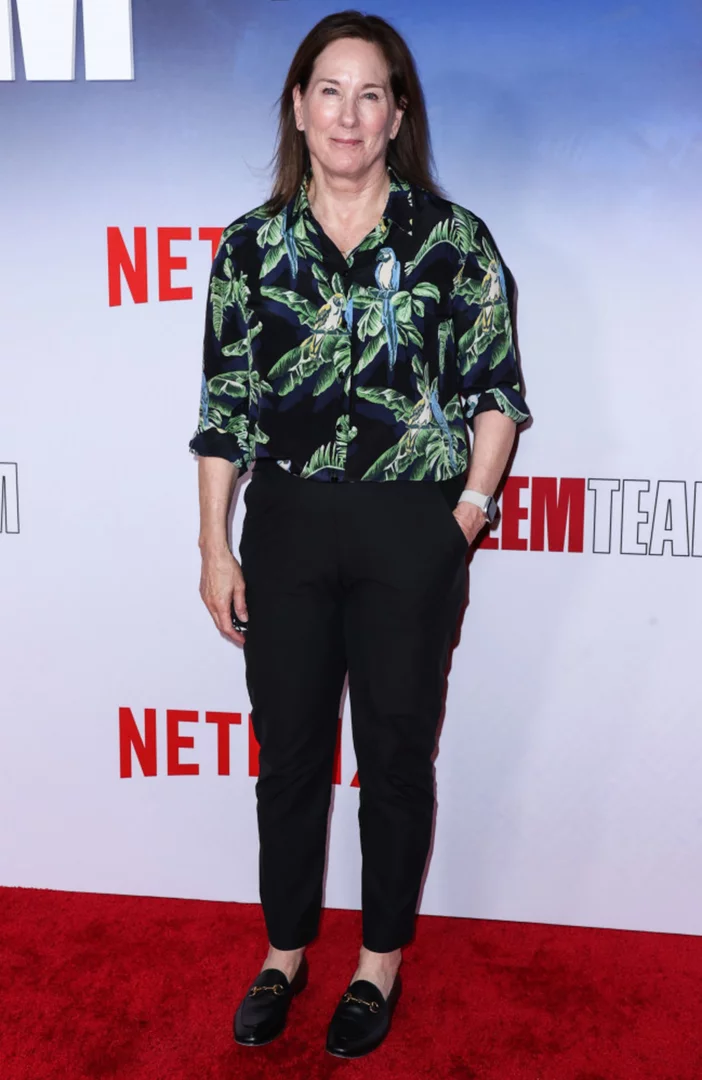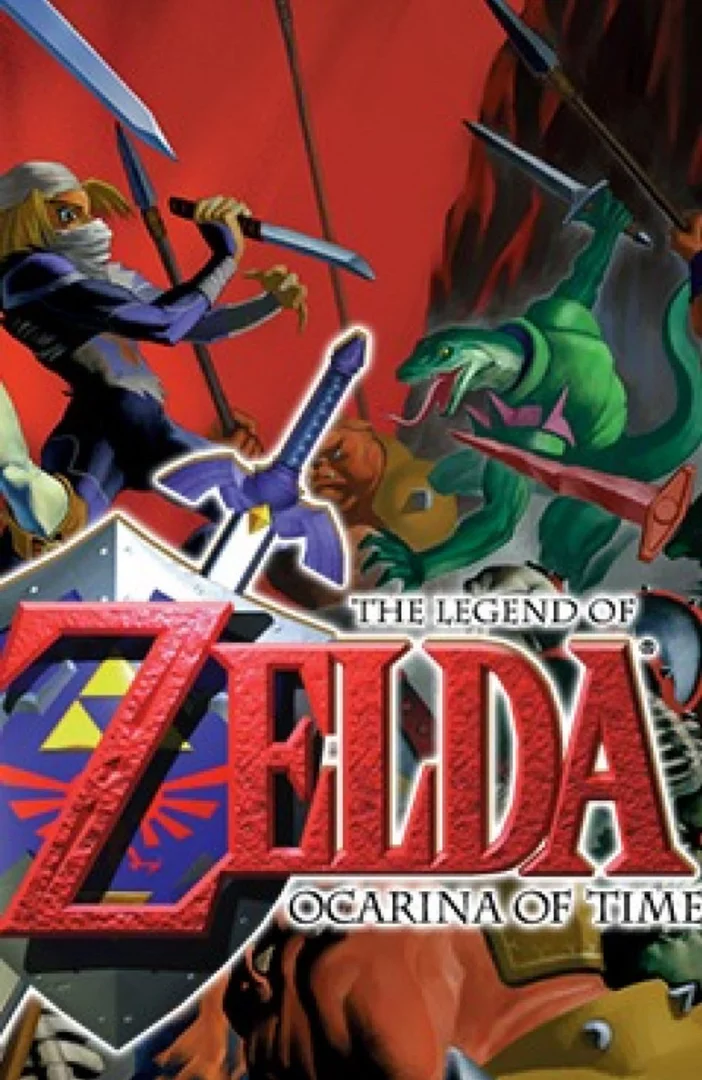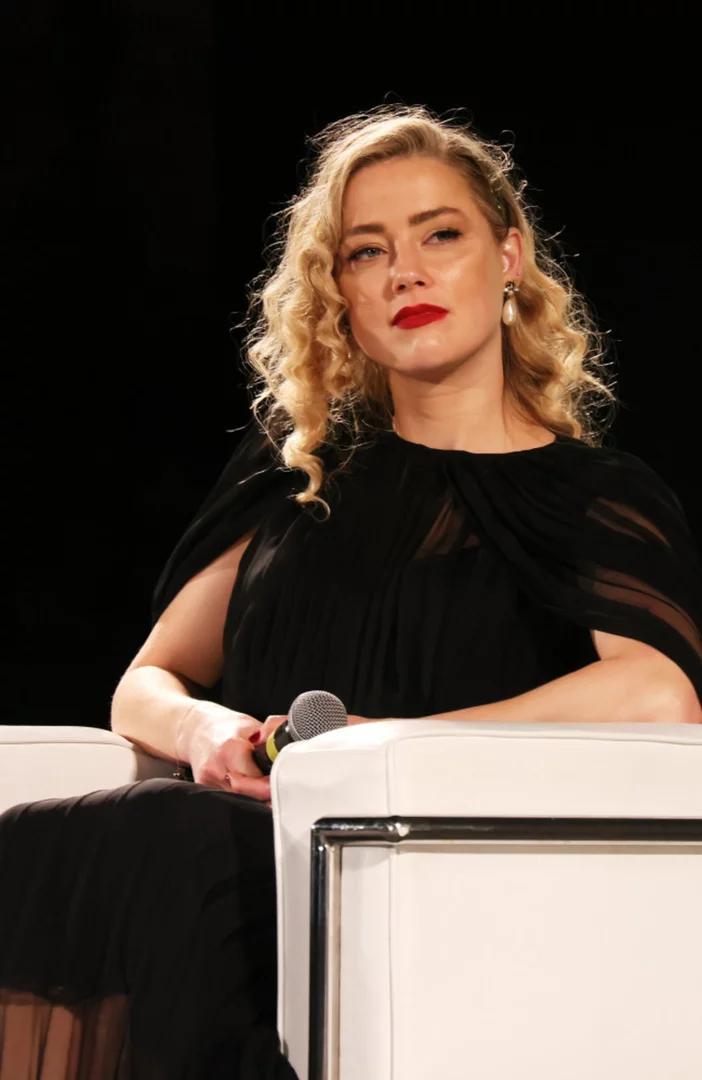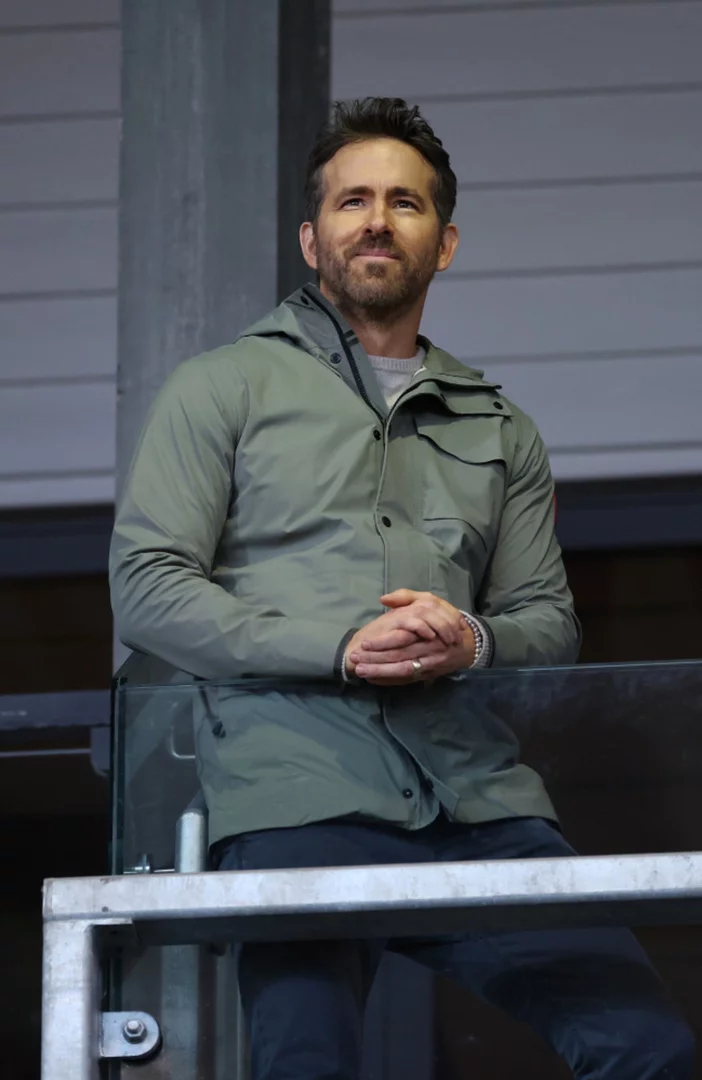In 1984, a Bennington College student named Bret Easton Ellis sold his first novel for $5000; it was called Less Than Zero, named after an Elvis Costello song. The story follows the exploits of Clay, an East Coast college student home in L.A. for Christmas break. He’s looking for his drug-addled childhood pal, Julian, who has fallen on hard times. In 1985, Simon & Schuster published the book; it became a bestseller and anointed Ellis as a member of the “literary Brat Pack,” alongside Jay McInerney, Tama Janowitz, Donna Tartt, and Jill Eisenstadt.
Two years later, Fox produced a film version of the book, starring Brat Packers Andrew McCarthy, Jami Gertz, James Spader, and Robert Downey Jr. The movie was not a faithful adaptation of the novel; in fact, McCarthy (who starred as Clay) later told The A.V. Club, “I don’t think there’s a line of the book in the movie.”
The movie grossed about $12.3 million worldwide against an $8 million budget, so it wasn’t exactly a hit. But in recent years, it’s been embraced by Ellis and has become revered for its soundtrack, Downey Jr.’s raw performance, and Edward Lachman’s stunning cinematography. Below are 12 fascinating facts about Less Than Zero, both the book and the film versions.
1. Bret Easton Ellis switched the novel from third to first person.
Ellis began working on Less Than Zero when he was a sophomore in high school. While attending Bennington College, Ellis’s professor, Joe McGinniss—who had showed the book to his own agent—suggested Ellis use first-person narration.
“And then as I was going through it, all of the fat started dropping away, and it became this completely different thing,” Ellis told Vice in 2010. “It needed to be rewritten. Now, I wrote that terrible first draft in eight weeks and people think that’s what was published. But I worked on that book for like two years to get it to the place where I wanted it to be.”
2. Ellis swears the book isn’t an autobiography.
Though the novel has been described as being autobiographical, Ellis has since cleared those rumors up. “Yes, like Clay, I had two sisters and my parents were divorced, and many of my friends were wealthy and did drugs and seemed promiscuous—or so I thought at the time,” Ellis told The Paris Review in 2012. “But I was a relatively well-adjusted kid. I mean, I wasn’t as severely alienated as Clay.”
As Ellis explained to Vice, it was his friends’s lives, more than his own, that influenced the story. “After being folded into that world when I was in fifth or sixth grade, when my parents moved me from a public school into a private school, I began to see this world that I really hadn’t seen before. I’d had a pretty middle-to-upper-class upbringing in the San Fernando Valley, until my father started to make more money. But he never made money on the level of my classmates. Their parents were mostly in the film industry, and that really became an influence for Less Than Zero, too.”
3. If the book were written today, Ellis said it would be “20 pages long.”
Ellis thinks the advent of smartphones would make the book “20 pages long” today. “There’s a long stretch in the book where Clay is driving around looking for Julian, stopping off at friends’ houses to use their phones,” he said in an interview with The Paris Review. “He even stops in at a McDonald’s to use a pay phone. But people can find each other very easily now. A single text—‘Dude, where the f**k are you? I want my money’—would take care of three-fourths of the action in the book.”
4. The original script was similar to the novel.
Producer Marvin Worth optioned Less Than Zero before it was even published and hired Pulitzer Prize-winning playwright Michael Cristofer to adapt the book for the big screen.
In Cristofer’s script, like in Easton’s book, it’s mentioned that Clay is bisexual and a casual drug user. “I think the script was commercial,” Worth told The New York Times, “because it had something gripping to say about the dilemma of a generation to whom nothing matters. It wasn’t really a drug film. It was about people who were destroyed by having had everything.”
The studio, on the other hand, thought the material was too dark to be a commercial hit and had producer Jon Avnet take over. “I had no interest in the Cristofer script,” Avnet told The New York Times in 1987. “I felt it was so depressing and so degrading. A crucial element of the American dream had gone haywire, and you had to put it in recognizable form in a movie, not just shock people.” Thus, Harley Peyton came onboard to rewrite the script, making Clay the clean-cut moral center.
5. The studio made the film version a lot tamer—and more conservative.
Fox invited youngsters to see the film, but they did not like Robert Downey Jr.’s Julian character. “There has been a tremendous conservative change in young audiences since the book was written in 1984,” Scott Rudin, Fox’s then-president of production, told The New York Times in 1987. “Their fantasy used to be great sexual experimentation. Now it is to live in a great apartment, have a great boyfriend, and wear great clothes.”
The production filmed new scenes to make Julian and Blair (Gertz) seem more “repentant,” including a scene where Blair—a cocaine addict—flushes the nose candy down a sink. The test audience cheered the action. “We would have been booed for dumping the coke eight years ago,” Rudin said.
6. Making the film exhausted Jami Gertz.
In 2012, Gertz told The A.V. Club that she went through a tough audition to get the part of Blair in Less Than Zero, but the hard times didn’t stop once she got cast. “That one was … well, it was practically all nights, which was exhausting. And it was the ’80s, and we were doing a drug movie,” she said. “So I, uh, don’t know if everyone was at their best.”
The Lost Boys star went on to explain that because she had just done a “Just Say No” campaign for the Reagan administration, the party culture around the set was a struggle for her. “I was not a girl who partied. I just wasn’t. And I remember having to go out and party as part of what we were doing beforehand,” she recalled. “[We] were going to go out to clubs, and I was just so tired. I’m like, ‘What the hell am I doing? I don’t want to go out to clubs and this and that.’ So for me, it was very different and probably a little scary. I was probably a little frightened, feeling like I was in over my head.”
That said, Gertz still felt like the movie resonated with audiences. “I think [the studio] had high hopes, but I don’t think [the film] made that much money. Yet it has really stood the test of time, and people still tell me how much they loved those performances.”
7. Downey Jr. reportedly fell harder into drug abuse while working on the film.
In addition to playing a drug addict in the film, Downey Jr. famously grappled with addiction in his real life. “Until that movie, I took my drugs after work and on the weekends,” Downey Jr. told The Guardian in 2003. “Maybe I’d turn up hungover on the set, but no more so than the stuntman. That changed on Less Than Zero.”
Downey Jr. went on to describe Julian, the character he played in the film, as akin to the ghost of Christmas Future from A Christmas Carol. “The character was an exaggeration of myself,” he said. “Then things changed and, in some ways, I became an exaggeration of the character. That lasted far longer than it needed to last.”
Downey Jr. eventually managed to kick his demons and, with the help of blockbuster roles like Iron Man, went on to become one of the world’s highest paid actors.
8. Ellis thought the film came off like a “afterschool special,” and could have used more source material from the book.
The book has a lot of disturbing scenes (including one involving child rape), but Ellis doesn’t think that should have deterred studio executives from making a more faithful adaptation of it.
“Scott Rudin certainly had a vision that was very close to the book,” Ellis later told Vice. “The first script was kind of hardcore. But then there was a regime change at the studio, and I think it was Leonard Goldberg who became head of production and, you know, he had kids.”
Ellis said the finished film came off as more of an “afterschool special” and was shocked a major studio distributed the film. If it were remade today, Ellis said it would likely be distributed by an indie company, and would be more like an art-house movie.
9. Paul Simon wrote “A Hazy Shade Of Winter.”
When Paul Simon was in Simon and Garfunkel, he wrote the folky song “A Hazy Shade of Winter,” which was released as a single in 1966. In 1982, Susanna Hoffs of The Bangles heard the song on the radio while toiling away at her day job in a ceramics factory. “When I heard that song, I thought, that’s so perfect for The Bangles,” she told the Independent in 2010.
The group put more of rock sound into their cover version and added it to their live set. In 1987, they recorded it for the Less Than Zero soundtrack, produced by Rick Rubin. (It plays over the opening credits of the film.) The song peaked at No. 2 on the Billboard charts—making it a bigger hit than Simon’s version.
10. The studio cut out a scene with the Red Hot Chili Peppers.
Cinematographer Ed Lachman told AMC that he thought the studio “took the film away from the director Marek Kanievska,” and forced the filmmakers to make the movie less edgy.
One of those big adjustments included cutting out a then up-and-coming rock band, the Red Hot Chili Peppers. “[They] were in that film and the studio became very conservative and they said, ‘Oh the band, they’re sweaty and they don’t have their shirts on,’” Lachman reportedly said. “They destroyed an incredible Steadicam shot, all because they had to cut around them being bare-chested.”
More than anything, Lachman just felt like the studio didn’t get what the film was about. “I think nobody really read the script—they just knew it was a youth-oriented script with this British director. Then when they saw it was about their own neighborhoods and families living in Hollywood, there was a real reaction to it,” he said. But if it’s any consolation, the Peppers’ song, “Fight Like a Brave,” remained in the film.
11. In 2010, Ellis published a loose sequel to Less Than Zero.
Imperial Bedrooms takes place 25 years after the events in Less Than Zero, and with the same cast of characters. Ellis got the idea to revisit the past after he re-read Less Than Zero while working on his book Lunar Park.
“I wanted to know where Clay was after I finished reading Less Than Zero,” he told NPR in 2010, adding that he hadn’t read the book since it was published in 1985. “This question dogged me; it haunted me. Where is Clay now? What is he doing? Is he married? Does he have kids? Is he in L.A.? Is he in New York? And it went on and on and on until I finally sat down, and I started making notes about who this guy would be, and where he would be in his mid-forties.”
12. Ellis has warmed up to the movie over the years.
Although he initially didn’t like the adaptation of his novel—neither did the actors or director—Ellis has since changed his tune. “I mean, the script’s not great and I had issues with some of the casting, but overall it’s a beautiful-looking film. I’ve really warmed up to it now. I’ve accepted it,” he told Amazon.
He’s also had a big change of heart regarding certain performances in the film. “Jami Gertz seems much better to me now than she did 20 years ago. It’s something I can watch,” Ellis told Movieline in 2010.
A version of this article was originally published in 2017 and has been updated for 2023.
This article was originally published on www.mentalfloss.com as 12 Surprising Facts About ‘Less Than Zero’.

